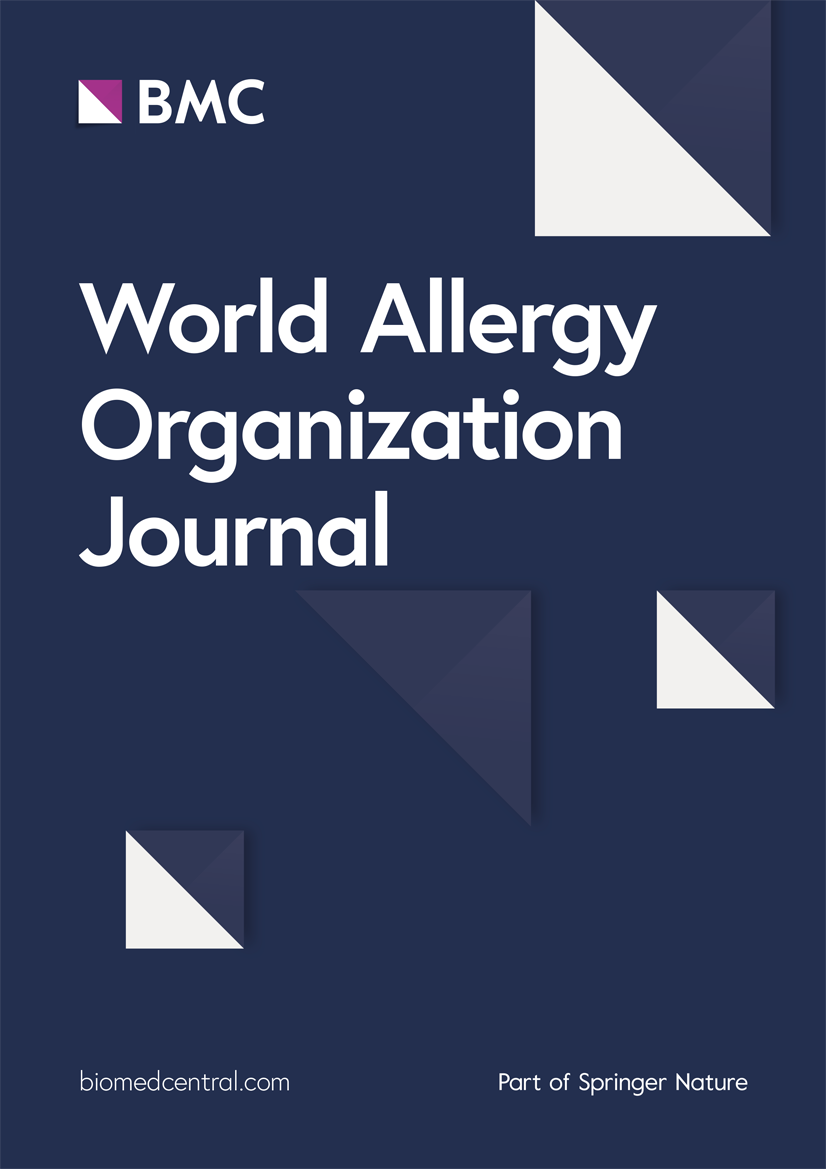生物标志物特征和疾病负担与现实生活中生物起始前重度哮喘患者间歇性和长期口服皮质类固醇相关(STAR)
IF 4.3
2区 医学
Q2 ALLERGY
引用次数: 0
摘要
背景:在严重哮喘(SA)中,推荐使用血嗜酸性粒细胞计数(BEC)(以及其他生物标志物和临床指标)进行哮喘表征,但口服皮质类固醇(OCS)的掩盖作用使这一方法具有挑战性。我们的目的是探讨在生物开始之前使用OCS(间歇性[iOCS]和长期[LTOCS])对现实生活中SA表型和生物标志物谱的影响,并通过生物标志物谱表征服用LTOCS的患者的SA负担。方法:这是一项基于登记的队列研究,包括2003年至2023年间收集的23个国家的数据,并与国际严重哮喘登记处(ISAR)共享。SA患者被分为3组,分别为:(i)无OCS处方,(ii) iOCS处方(即过去12个月≤90天,通常为短期加重疗程)和(iii) LTOCS处方(即过去12个月≤90天)。根据OCS处方模式,定量SA患者生物起始前一年的生物标志物分布(即BEC、呼气一氧化氮分数[FeNO]和总免疫球蛋白E [IgE])。根据BEC截止值(<;150和≥150个细胞/μL)对规定LTOCS的表型进行表征。结果纳入的4305例患者中,5.0% (n = 215)、54.1% (n = 2330)和40.9% (n = 1760)的患者未开OCS、iOCS和LTOCS。BEC分布随处方模式和LTOCS剂量(≤5mg ~≥20mg /d)而变化;28.6%的LTOCS患者(n = 369/1288)的BEC为<;150个细胞/μL,而iOCS组为19.5% (n = 284/1460),无OCS组为14.0% (n = 21/150)。LTOCS组的中位BEC也显著低于iOCS组(310 vs 400 cells/μL;p & lt;0.001)。IgE也有类似的模式,但FeNO没有。在BEC≥150 cells/μL的LTOCS患者中,39.9%的患者发作≥4次,75.1%的患者哮喘症状不受控制,55.9%的患者存在持续性气流阻塞(BEC≥150 cells/μL的患者中分别为40.9%、76.2%和59.5%)。结论无论是间歇性用药还是长期用药,socs都可能影响BEC的分布,从而增加表型错误分类的风险,影响后续的治疗决策。FeNO似乎不太容易受到ocs诱导的抑制。LTOCS组患者的疾病负担较高,且与剂量和BEC高度无关。我们的研究结果强调了在表征SA时考虑OCS使用,甚至是间歇性使用的重要性,并建议对低BEC的LTOCS患者进行早期表型分析和替代治疗策略。本文章由计算机程序翻译,如有差异,请以英文原文为准。
Biomarker profile and disease burden associated with intermittent and long-term oral corticosteroid use in patients with severe asthma prior to biologic initiation in real-life (STAR)
Background
Asthma characterization using blood eosinophil count (BEC) (among other biomarkers and clinical indices) is recommended in severe asthma (SA), but the masking effect of oral corticosteroids (OCS), makes this challenging.
Aim
Our aim was to explore the effect of OCS use (both intermittent [iOCS] and long-term [LTOCS]) prior to biologic initiation on SA phenotype and biomarker profile in real-life and to characterize the burden of SA among patients prescribed LTOCS by biomarker profile.
Methods
This was a registry-based cohort study, including data from 23 countries collected between 2003 and 2023 and shared with the Internatonal Severe Asthma Registry (ISAR). Patients with SA were categorized into 3 cohorts, those with: (i) no prescription for OCS, (ii) prescription(s) for iOCS (ie, ≤90 days in previous 12-months, usually short courses for exacerbations), and (iii) prescriptions for LTOCS (ie, >90 days in previous 12-months). Biomarker distribution (ie, BEC, fractional exhaled nitric oxide [FeNO], and total Immunoglobulin E [IgE]) were quantified in the year prior to biologic initiation in patients with SA according to OCS prescription pattern. Phenotypes were characterized for those prescribed LTOCS according to BEC cut-off (<150 and ≥ 150 cells/μL).
Results
Of 4305 patients included, 5.0% (n = 215), 54.1% (n = 2330) and 40.9% (n = 1760) were prescribed no OCS, iOCS, and LTOCS, respectively. The BEC distribution varied by prescription pattern and LTOCS dose (<5 mg to ≥20 mg/day); BEC was <150 cells/μL in 28.6% (n = 369/1288) of LTOCS patients, compared to 19.5% (n = 284/1460) of iOCS patients and 14.0% (n = 21/150) of those in the no OCS group. Median BEC was also significantly lower in the LTOCS versus the iOCS group (310 vs 400 cells/μL; p < 0.001). A similar pattern was noted for IgE, but not FeNO. Among LTOCS patients with BEC <150 cells/μL, 39.9% experienced ≥4 exacerbations, 75.1% had uncontrolled asthma symptoms and 55.9% had evidence of persistent airflow obstruction (compared with 40.9%, 76.2% and 59.5% of those with BEC ≥150 cells/μL, respectively).
Conclusions
OCS, whether prescribed intermittently or long term, affect BEC distribution potentially leading to heightened risk of phenotype misclassification and influencing subsequent treatment decisions. FeNO appears to be less susceptible to OCS-induced suppression. Disease burden was high for those in the LTOCS group and was high independent of dose and BEC. Our findings highlight the importance of considering OCS use, even intermittent use, when characterizing SA, and suggests the need for earlier phenotyping and alternative treatment strategies for LTOCS patients with low BEC.
求助全文
通过发布文献求助,成功后即可免费获取论文全文。
去求助
来源期刊

World Allergy Organization Journal
Immunology and Microbiology-Immunology
CiteScore
9.10
自引率
5.90%
发文量
91
审稿时长
9 weeks
期刊介绍:
The official pubication of the World Allergy Organization, the World Allergy Organization Journal (WAOjournal) publishes original mechanistic, translational, and clinical research on the topics of allergy, asthma, anaphylaxis, and clincial immunology, as well as reviews, guidelines, and position papers that contribute to the improvement of patient care. WAOjournal publishes research on the growth of allergy prevalence within the scope of single countries, country comparisons, and practical global issues and regulations, or threats to the allergy specialty. The Journal invites the submissions of all authors interested in publishing on current global problems in allergy, asthma, anaphylaxis, and immunology. Of particular interest are the immunological consequences of climate change and the subsequent systematic transformations in food habits and their consequences for the allergy/immunology discipline.
 求助内容:
求助内容: 应助结果提醒方式:
应助结果提醒方式:


